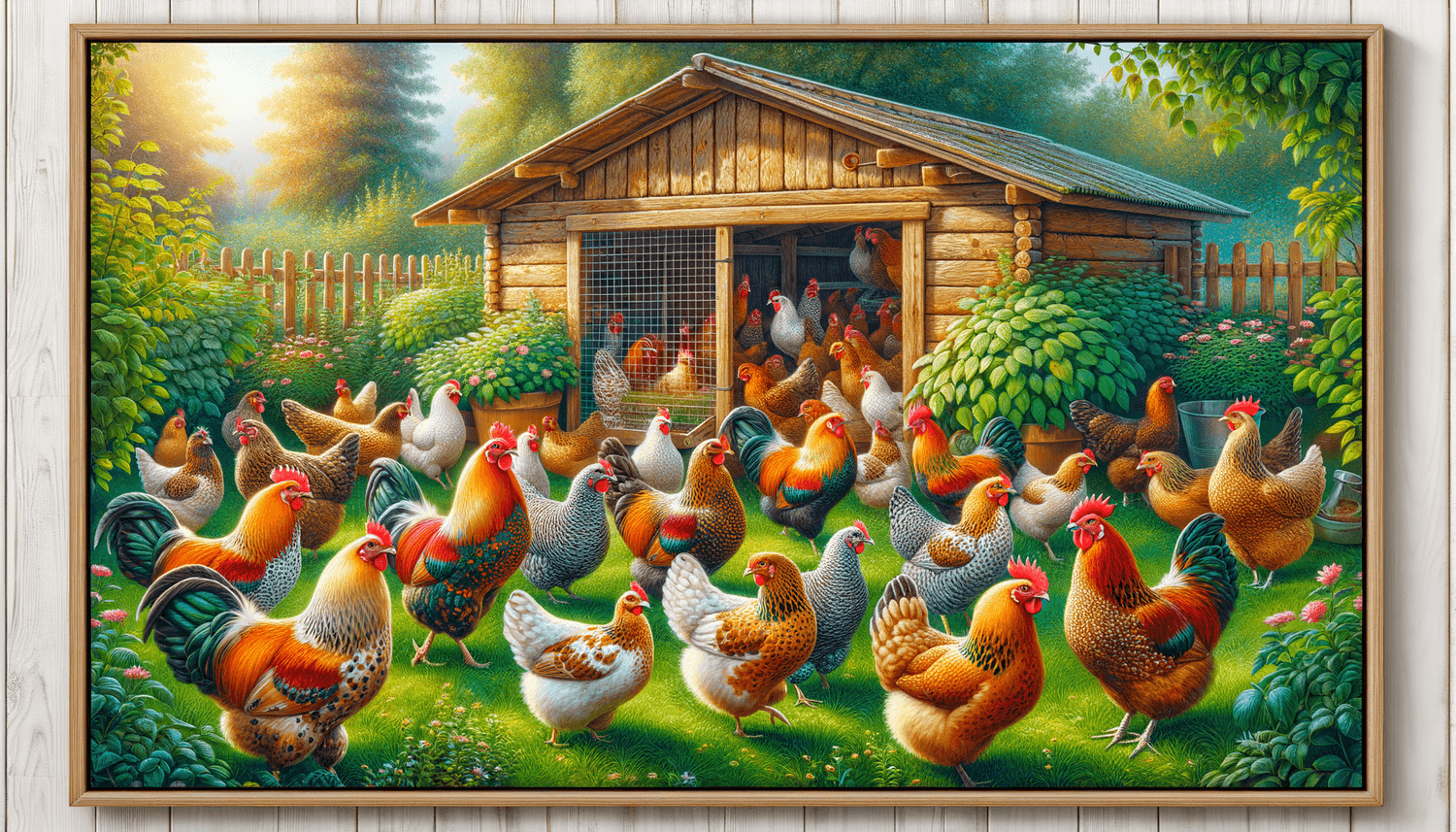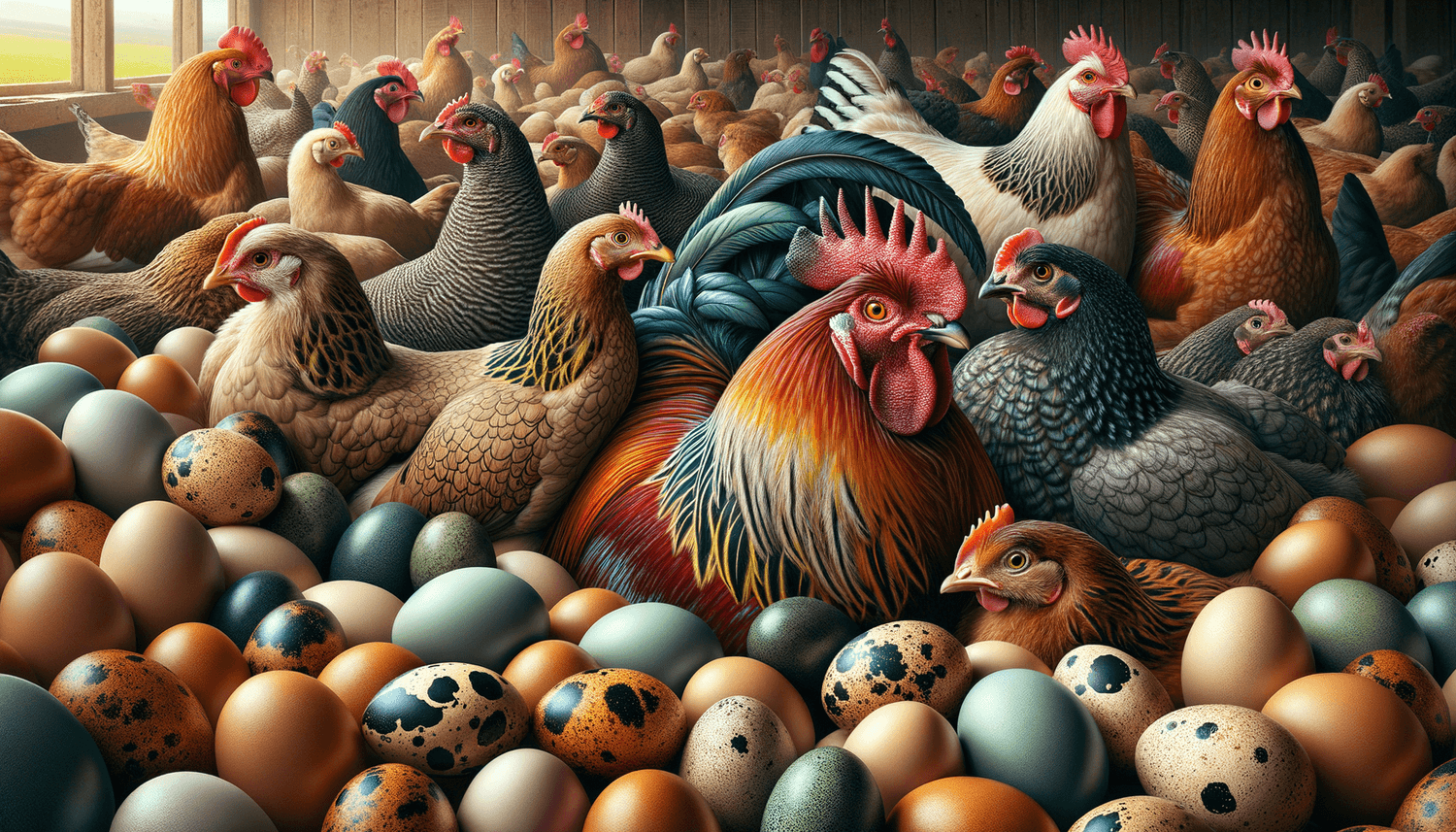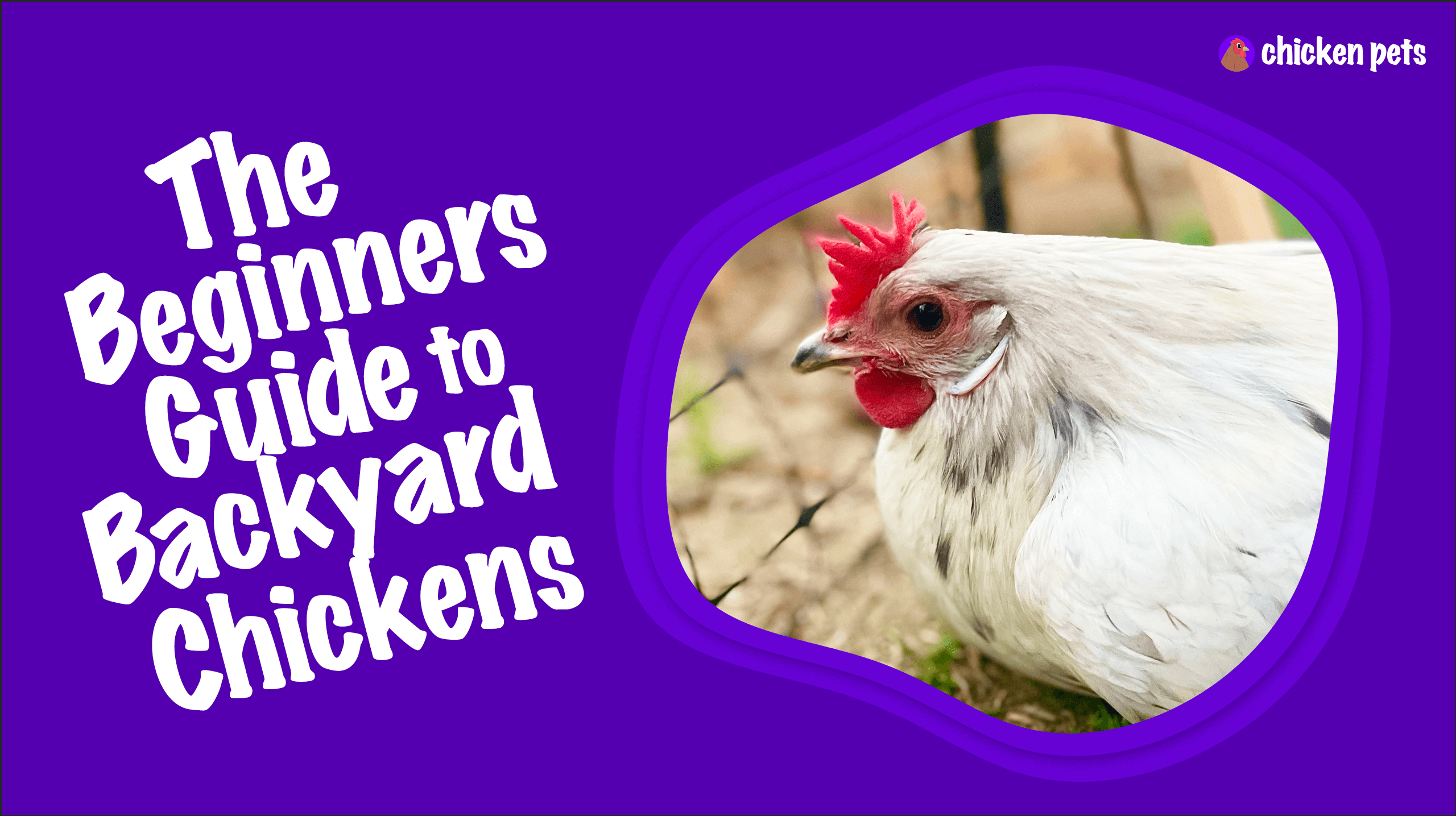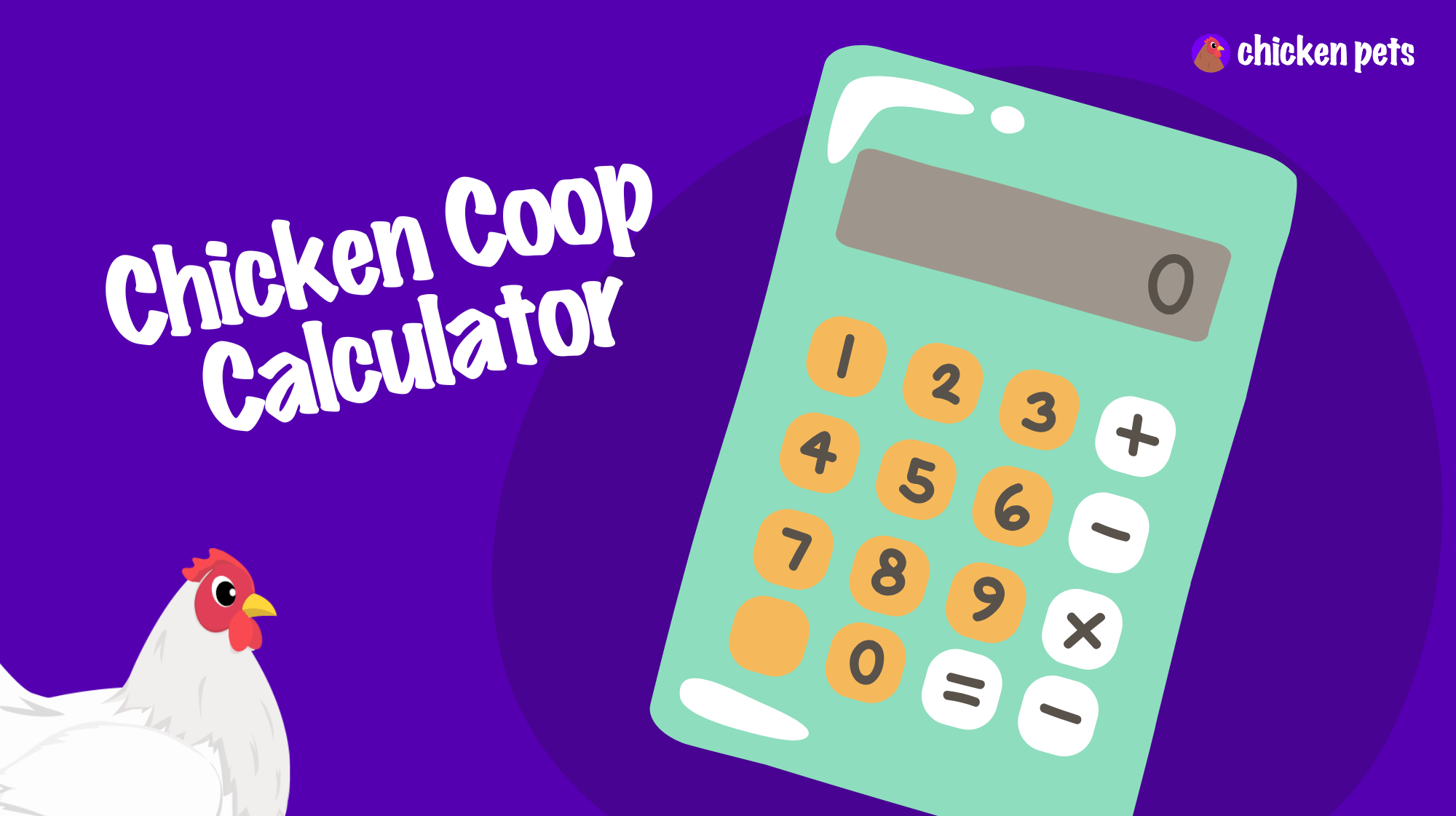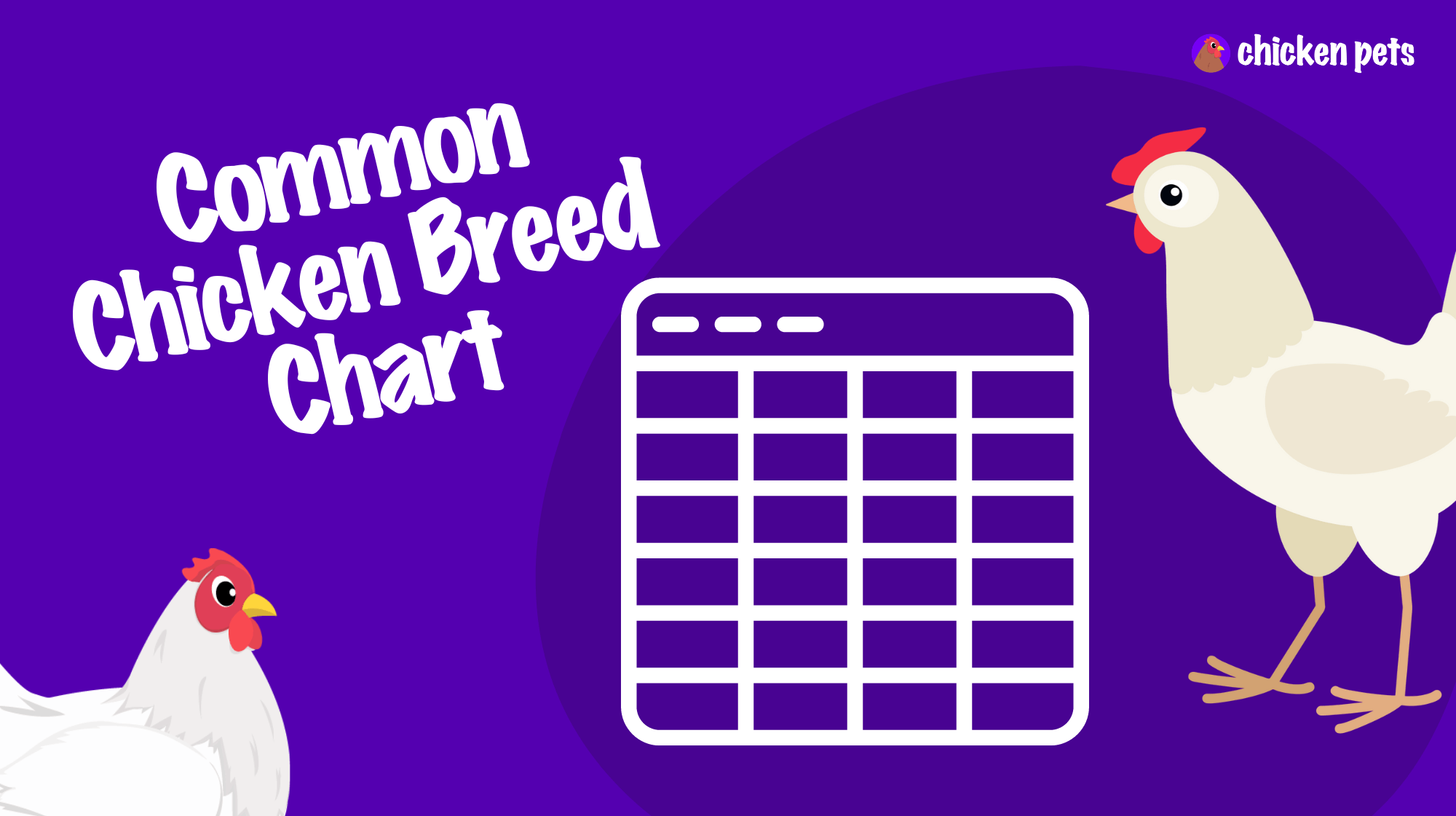Definition of Fertilized Egg
A Fertilized Egg refers to an egg that has been successfully inseminated by sperm, resulting in the fusion of the male and female genetic material to form a viable embryo. In the context of chickens and poultry, a fertilized egg contains the developing embryo of a chick, which, if incubated under optimal conditions, will hatch into a live offspring. Fertilized eggs are critical for the replenishment and growth of poultry populations in both commercial and backyard settings.
Importance of Fertilized Eggs for Backyard Chicken Owners and Enthusiasts
Understanding the concept of fertilized eggs is vital for backyard chicken owners and enthusiasts, as it is the primary means to ensure the continuation and growth of their flock. By recognizing and handling fertilized eggs appropriately, they can ensure successful hatching and maintain a productive and healthy chicken population.
For those interested in breeding chickens or exploring specific chicken breeds, managing fertilized eggs becomes even more relevant. Ensuring proper mating between roosters and hens, and optimizing the incubation conditions, significantly improves hatch rates, and allows for the preservation and propagation of desired breed traits.
Additionally, backyard chicken owners can use the knowledge of fertilized eggs to make informed decisions whether to consume or incubate these eggs. As fertilized eggs have a viable embryo, consuming them may not be suitable for some people due to personal or cultural reasons. By identifying and segregating fertilized eggs from unfertilized ones, backyard chicken owners can cater to various preferences in their community or household.
How Fertilized Eggs Work in Chickens and Poultry
In chickens and other poultry, the process of creating a fertilized egg begins with the mating of a rooster and a hen. During mating, the rooster transfers sperm into the reproductive tract of the hen. The sperm then travels up the oviduct and fertilizes the ovum present in the forming egg. The fertilized ovum, containing genetic material from both the male and the female, will eventually develop into an embryo.
As the egg continues to develop, it acquires the necessary nutrients and structure to support the growing embryo. This includes the production of egg white (albumen) and the formation of the shell. Once the fully-formed egg is laid, it contains a fertilized embryo that has the potential to develop into a new chicken.
For the fertilized egg to hatch successfully, it requires a carefully controlled environment with the right temperature and humidity levels. In nature, hen-brooded fertilized eggs receive the required heat from the mother hen. In artificial settings, incubators are used to mimic the natural conditions and provide an optimal environment for the eggs to develop fully. This process typically takes 21 days for chickens, after which the developed chick breaks through the eggshell and emerges, marking the successful completion of the fertilization and incubation process.
Practical Application of Fertilized Egg Knowledge for Backyard Chicken Owners
Backyard chicken owners can benefit from understanding the concept of fertilized eggs in various aspects of flock management. By applying this knowledge, they can improve their flock’s productivity, health, and sustainability. Here are some practical applications:
- Incubating fertilized eggs: Owners can optimize the incubation process by maintaining correct temperature, humidity, and ventilation in either a homemade or commercial incubator for successful hatching.
- Identifying fertilized eggs: By learning about signs of fertilization, such as the presence of a blastoderm (a white ring or bullseye on the yolk), owners can separate fertilized eggs from unfertilized ones for incubation, consumption, or sale.
- Maintaining rooster to hen ratio: A well-balanced rooster-to-hen ratio ensures optimal fertilization, contributing to a consistent and healthy flock population. A general guideline is to keep one rooster for every 10-15 hens.
- Breeding for desirable traits: Owners interested in specific chicken breeds can take control of the breeding process to preserve or enhance desired traits, by selectively breeding their birds based on genetics, and analyzing the resulting fertilized eggs.
- Preventing unnecessary brooding: Recognizing fertilized eggs can help avoid unplanned brooding by hens, which can reduce their egg-laying productivity. Owners can remove fertilized eggs or implement management techniques to break broodiness.
By applying this information on fertilized eggs, backyard chicken owners can create an efficient, productive, and well-managed environment for their birds, supporting a thriving and sustainable flock.
Tips and Recommendations for Managing Fertilized Eggs in Chicken Care
Backyard chicken owners should handle fertilized eggs with care to ensure the successful development and hatching of healthy chicks. The following practical advice and best practices will help optimize the journey of a fertilized egg from insemination to hatching.
- Proper egg storage: Prior to incubation, store fertilized eggs in a cool, dry place with the pointed end facing downward. Maintain a storage temperature between 55-60°F (12.7-15.5°C) with a relative humidity between 70-80% to keep embryos viable.
- Rotate stored eggs: Turn the stored fertilized eggs at least three times a day, before the incubation period, to prevent the embryo from sticking to the inner shell membrane.
- Timely incubation: Incubate fertilized eggs within 7-10 days of being laid to achieve the best hatching results. The hatchability of stored eggs reduces significantly beyond this timeframe.
- Regular candling: Use the candling method during incubation to check the development of embryos within the egg. Candling involves shining a bright light through the shell to inspect contents. This helps identify and remove any non-viable eggs or eggs with issues, such as bacterial growth.
- Support natural brooding: If using a broody hen to incubate fertilized eggs, ensure that the hen has a clean, quiet, and dimly lit area for nesting. Maintain access to food and water for the broody hen without disturbing the incubation process.
- Incubator maintenance: When using an incubator, monitor and maintain consistent temperature, humidity, and ventilation throughout the incubation period. Turn the eggs by hand or use an automatic egg turner multiple times a day for even development.
- Prepare for hatching: Ready a brooder box to house and care for the chicks once they hatch. Ensure the brooder is clean, dry, and at the correct temperature (approximately 95°F or 35°C for the first week) with suitable bedding, food, and water.
By following these tips and recommendations, backyard chicken owners can ensure the successful development and hatching of fertilized eggs, contributing to a healthy and flourishing flock.
Additional Information on Fertilized Eggs in Chickens and Poultry
Here are some supplemental facts and insights related to fertilized eggs that backyard chicken owners and enthusiasts may find valuable in understanding and managing their flocks more effectively:
- Sex of the chick: The sex of a fertilized egg is determined at the moment of fertilization. However, it is generally challenging to predict the sex of a chick from the egg, although some breeds display gender-specific color patterns on newly-hatched chicks.
- Genetic diversity: Ensuring a genetically diverse flock is essential for the long-term health and productivity of backyard poultry. Regularly introducing new birds or breed lines can help maintain genetic diversity and avoid inbreeding issues within the flock.
- Hybrid vigor: Fertilized eggs produced by crossing two different breeds or genetic lines may result in offspring with hybrid vigor or heterosis. Such offspring often exhibit improved growth rates, health, and other desirable traits as a result of combining the genetic strengths from both their parents.
- Double-yolked eggs: Occasionally, fertilized double-yolked eggs can be produced. However, it is rare for both yolks to become fertilized and for twin chicks to hatch successfully. The abnormal size of these eggs may cause decreased hatchability and complications during the hatching process.
- Commercial egg-laying hens: In commercial egg-laying operations, fertilized eggs are typically not produced. Hens are often housed in environments without roosters, which prevents fertilization and enables the production of unfertilized eggs suitable for human consumption.
By understanding additional aspects of fertilized eggs, backyard chicken owners can develop a comprehensive understanding of their flock’s reproductive processes and make better-informed decisions for breeding, flock management, and egg handling.
Frequently Asked Questions About Fertilized Eggs
Here are some commonly asked questions related to fertilized eggs in chickens and poultry, along with easy-to-understand answers to guide backyard chicken owners and enthusiasts:
1. Can you eat fertilized eggs?
Yes, fertilized eggs can be safely consumed, as there is no significant difference in taste or nutritional value between fertilized and unfertilized eggs. However, they must be collected promptly and stored at the proper temperatures to prevent embryonic development. Some people may prefer not to eat fertilized eggs for ethical, cultural, or personal reasons.
2. How can you tell if an egg is fertilized?
One common method to check for fertilization is by examining the egg yolk after cracking the egg open. A fertilized egg will show a blastoderm, which appears as a white ring or bullseye, indicating the presence of male and female genetic material. Additionally, you can use the candling method on intact eggs during incubation to inspect their content and monitor the development of the embryo.
3. How long does it take for a fertilized egg to hatch?
The duration of incubation required for a fertilized egg to hatch varies depending on the type of poultry. For chickens, it typically takes 21 days under optimal incubation conditions. Other poultry, such as ducks and turkeys, require different incubation periods that can range from 25 to 28 days or more.
4. Do you need a rooster to get fertilized eggs from hens?
Yes, a rooster is required to fertilize the hen’s eggs. During mating, the rooster transfers sperm into the hen’s reproductive tract, enabling the fertilization of eggs. Without the presence of a rooster, hens will continue to lay eggs, but they will be unfertilized and incapable of developing into chicks.
5. Can you incubate store-bought eggs?
It is highly unlikely that store-bought eggs can be incubated and hatched. Commercial egg-laying operations typically separate hens from roosters, resulting in unfertilized eggs. Additionally, the conditions under which the eggs are cleaned, stored, and transported may not be suitable for preserving embryo viability even if they were fertilized.
6. How often should fertilized eggs be turned during incubation?
Fertilized eggs should ideally be turned at least 3 to 5 times a day during the incubation period. This helps prevent the embryo from sticking to the inner shell membrane and promotes even development. With automatic incubators, this process can be automated, whereas manual egg turning requires consistency and attention to detail.
7. Can you stop a hen from laying fertilized eggs?
To prevent hens from laying fertilized eggs, you can remove any roosters from your flock, which will prevent mating and insemination. Keep in mind that sperm can remain viable in a hen’s reproductive tract for up to two weeks after successful mating, so it may take some time for the eggs to become unfertilized.


